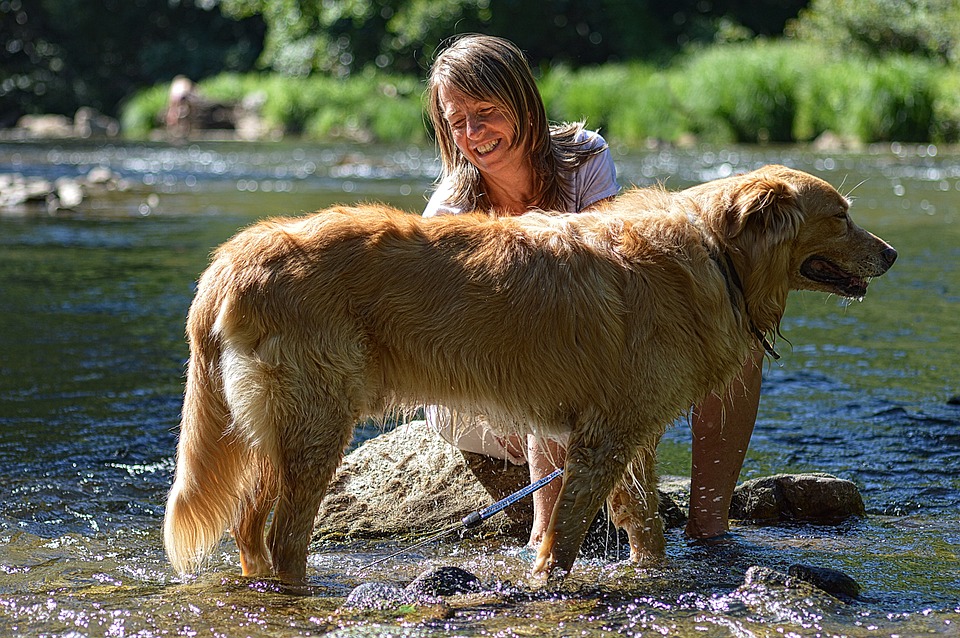Title: The Importance of Regular Dog Grooming: Health and Happiness for Your Furry Friend
Introduction:
Dogs are loyal companions and beloved members of our families. As responsible pet owners, it is our duty to ensure their overall well-being, which includes providing regular grooming. Grooming is not just about appearance, but it plays a vital role in maintaining their health and happiness. In this article, we will explore the importance of regular dog grooming and its benefits. Let’s dive in!
Benefits of Regular Dog Grooming:
1. Coat Health:
Regular grooming helps maintain a healthy coat for your furry friend. Brushing their hair regularly removes dirt, dead hair, and skin cells, preventing matting and tangling. Additionally, brushing redistributes the natural oils in their skin, promoting a shiny and healthy coat. This can also prevent skin irritations, hot spots, and other related allergies.
2. Health Monitoring:
Through regular grooming sessions, you can spot any potential health issues early on. Checking your dog’s skin for abnormalities, such as lumps, bumps, or rashes, can help detect skin infections or parasites. By inspecting their eyes, ears, and mouth, you can identify symptoms of issues like infections or dental diseases. Regular grooming allows you to promptly address these concerns, resulting in early intervention and better health outcomes for your pet.
3. Preventing Ear Infections:
Dog breeds with floppy ears are more prone to ear infections due to inadequate airflow. Regular grooming includes cleaning and checking the ears for any signs of infection, such as redness, swelling, or discharge. By implementing a routine ear cleaning, you can prevent the buildup of wax and debris, reducing the risk of infections and discomfort for your furry friend.
4. Nail and Paw Care:
Neglected nails can cause pain and discomfort for dogs. Overgrown nails can lead to deformities in their paws and change the way they walk. Regular grooming includes trimming your dog’s nails to an appropriate length, preventing them from snagging or getting caught on surfaces. Additionally, grooming also allows for inspecting paw pads, removing any foreign objects like burrs or thorns, and checking for injuries or cracks.
5. Dental Health:
Oral hygiene is often overlooked in dogs, leading to dental diseases, bad breath, and potential tooth loss. Grooming brings oral care into focus, allowing you to brush your dog’s teeth regularly or use dental chewing treats. By maintaining proper dental hygiene, you can prevent periodontal diseases and maintain fresh breath for your furry friend.
6. Stress Reduction:
Regular grooming sessions contribute to stress reduction for your dog. Introducing grooming from an early age enables your pet to become familiar with the process, minimizing anxiety or fear associated with grooming activities. Regular grooming can be a calming routine that strengthens the bond between you and your furry friend, promoting a sense of trust and relaxation.
Frequently Asked Questions (FAQs):
Q1: How often should I groom my dog?
A: The frequency of grooming depends on factors such as breed, coat type, and tolerance level. Dogs with long hair and double coats may require grooming every 4-6 weeks, while those with shorter hair may only need grooming every 8-12 weeks. Establish a grooming routine based on your dog’s specific needs and consult a professional groomer if unsure.
Q2: Can I groom my dog at home?
A: Yes, grooming your dog at home is possible, but it requires the right tools, techniques, and a calm environment. Regular brushing, ear cleaning, nail trimming, and dental care can be done at home. However, for professional services like haircuts or specific breed grooming standards, it is advisable to consult a professional groomer.
Q3: What are the signs of skin issues that require immediate veterinary attention?
A: If you notice signs such as excessive itching, redness, swelling, hair loss, or any unusual lumps or bumps, it is crucial to consult a veterinarian. They can perform necessary tests to diagnose the issue and prescribe appropriate treatment.
Q4: Are there any specific considerations for grooming different dog breeds?
A: Yes, different dog breeds require unique grooming techniques and tools. For example, long-haired breeds need regular brushing to prevent matting, while short-haired breeds may need occasional deshedding. Additionally, some breeds may require specialized coat care, such as regular trims, specific haircuts, or even professional grooming to maintain their breed standards.
Q5: What if my dog dislikes grooming activities?
A: Some dogs may exhibit resistance or anxiety during grooming. It is essential to introduce grooming gradually and positively reinforce the experience with treats, praise, and patience. For dogs who are extremely fearful or aggressive during grooming, professional help from a trainer or groomer experienced in handling difficult dogs might be necessary.
Conclusion:
Regular dog grooming is not just about making your furry friend look good; it is an essential part of maintaining their overall health and happiness. From coat health and monitoring their well-being to preventing infections and promoting dental hygiene, grooming plays a vital role in ensuring your pet’s well-being. By investing time and effort into grooming, you are making a significant contribution to your dog’s overall quality of life. So, embrace regular grooming as a bonding experience and cherish the health and happiness of your furry friend!

